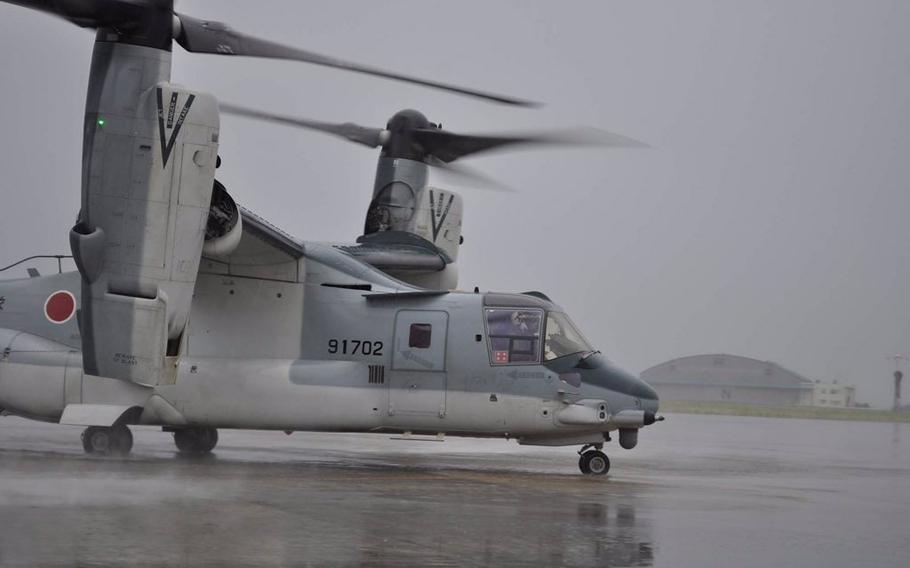Asia-Pacific
Japan to resume Osprey flights based on new US guidelines
Stars and Stripes December 23, 2024

Japan’s Ground Self-Defense Force announced plans to resume flying its fleet of V-22 Ospreys, like the one shonw here. (Japan Ministry of Defense)
Japan plans to put its Osprey tiltrotor aircraft back in the air after imposing safety guidelines affecting the aircraft transmissions announced by the U.S. military last week, according to the Ministry of Defense on Saturday.
The Japan Ground Self-Defense Force grounded its 17 V-22 Ospreys on Dec. 10 following a near crash by a U.S. Air Force Osprey in New Mexico. The Japanese grounded their tiltrotors a day after the U.S. grounded its fleet.
The schedule for the return to flight along with the number of aircraft affected have not been disclosed, a spokesman for Japan’s Ministry of Defense said by phone Monday.
Naval Air Systems Command, which runs the Osprey program for the U.S. military, on Thursday ordered new guidelines for metal gears inside the aircraft’s transmission, known as the proprotor gearbox, according to a news release on the same day from the command.
All Ospreys with proprotor gearboxes under a certain number of flight hours will be subject to additional safety restrictions. The restrictions affect the newer transmissions because investigators have found that the metal weaknesses, if they are going to occur, happen early on, The Associated Press reported Friday.
Tiltrotors with proprotor gearboxes that exceed the number of flight hours have resumed flying.
The command said Thursday that the additional safety controls “will remain in place” until the proprotor gearboxes are replaced. It did not reveal the flight threshold for the guidelines or say how many aircraft will be affected.
During a Nov. 20 flight involving a CV-22B Osprey at Cannon Air Force Base, N.M., the crew received warnings about the metal gears inside the proprotor gearbox.
The aircraft lost an engine, but the crew was able to land due to lessons learned from the November 2023 crash off the coast of Yakushima in southern Japan that killed eight Air Force Special Operations Command service members, according to the AP.
That tragedy led the U.S. military to ground its fleet of about 400 Ospreys between Dec. 6 and March 8 while investigators examined the cause.
Following the New Mexico incident, all military services again grounded their tiltrotors. The Marine Corps, however, put its Ospreys back in the air days later.
Replacing the transmissions likely would take years for the approximately 400 aircraft in the military’s fleet.
Japan also grounded its Ospreys for two weeks in late October and early November after one of the aircraft was damaged during a joint exercise with U.S. forces.
Three Marines were among the 16 troops aboard the aircraft participating in a disaster response drill during Keen Sword as it attempted to take off from Camp Yonaguni, a Japanese base on a remote island west of Okinawa. No one was injured when the aircraft struck the ground.
An investigation committee determined the pilot forgot to turn on an interim power switch that provides additional engine power for takeoffs. Flight procedures require the switch be turned on after the engine is started and during takeoff.
The Osprey was shipped from Yonaguni on Thursday and will be transported to Camp Kisarazu, Chiba prefecture, in the south of Tokyo, a Ground Self-Defense spokesman said by phone Monday.
Some Japanese government officials may speak to the media only on condition of anonymity.
The revolutionary aircraft lands and takes off like a helicopter but flies as a fixed-wing aircraft.
koja.keishi@stripes.com, @KeishiRKoja
mcelhiney.brian@stripes.com, @BrianMcElhiney